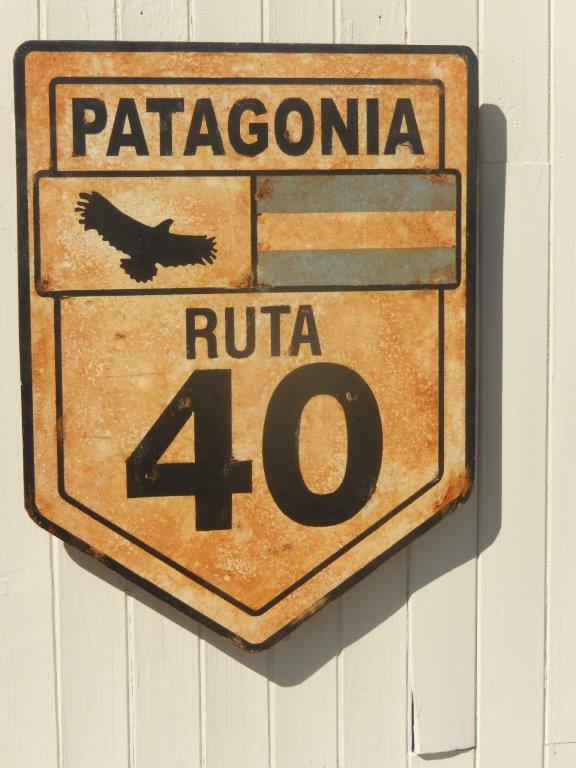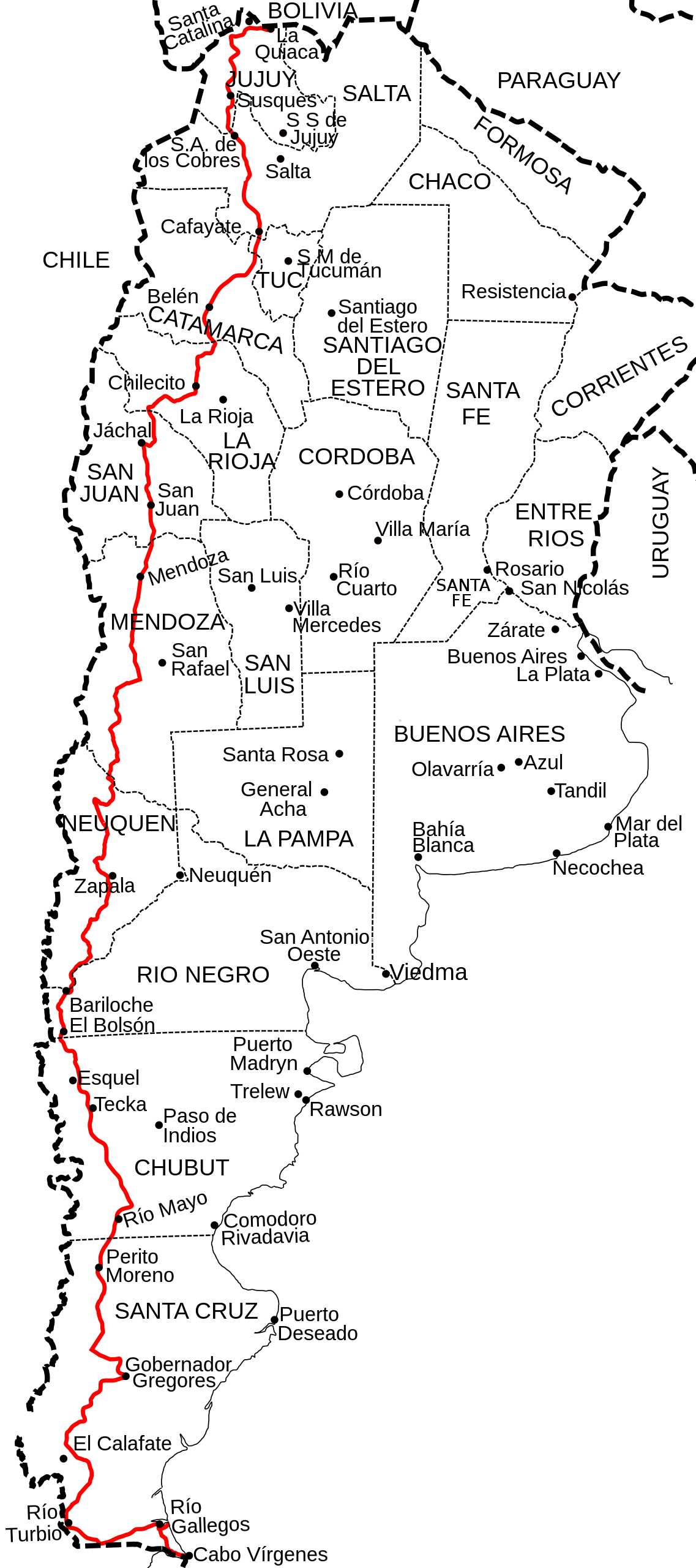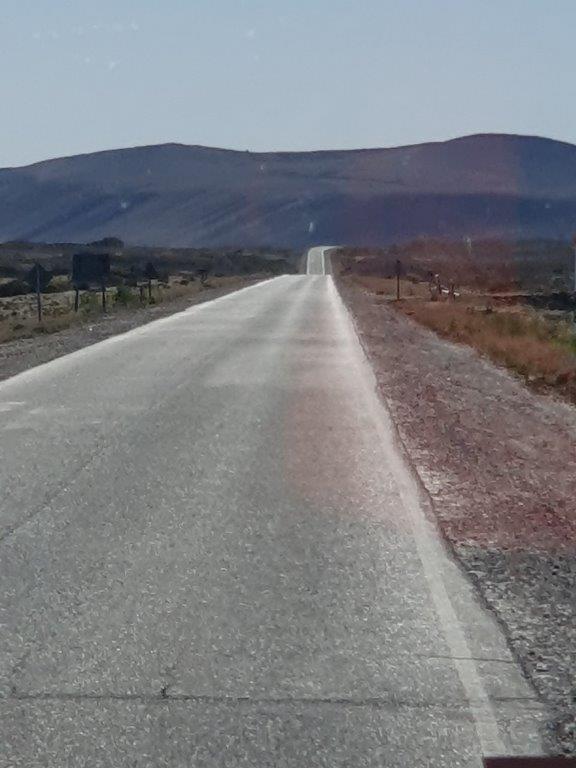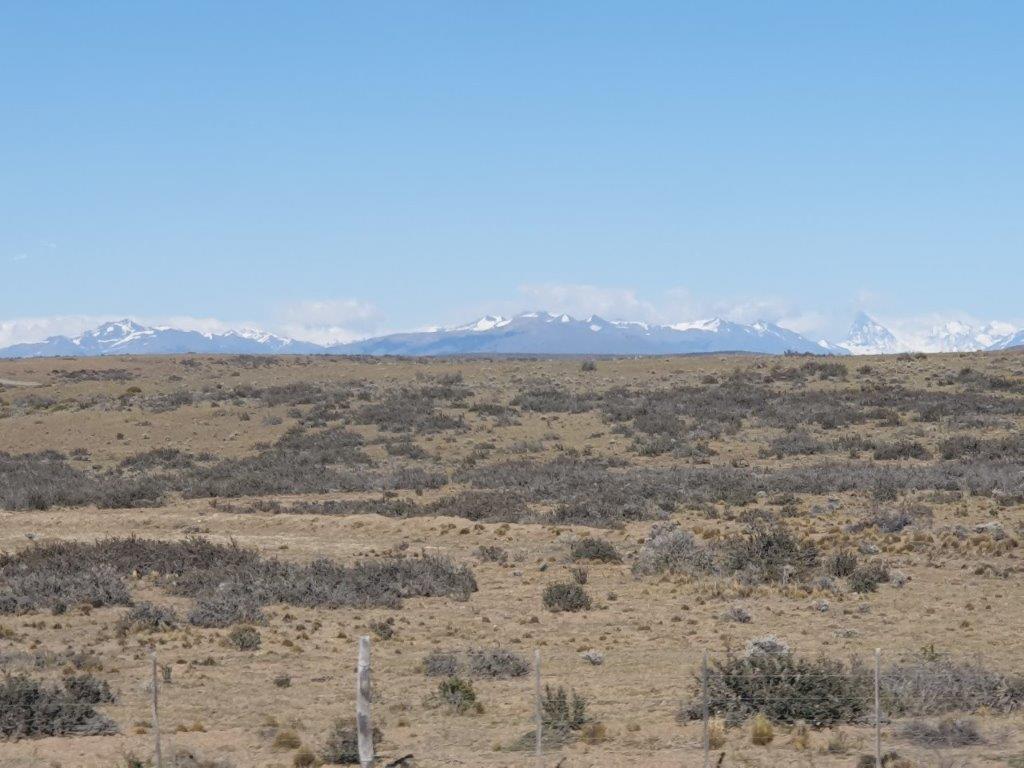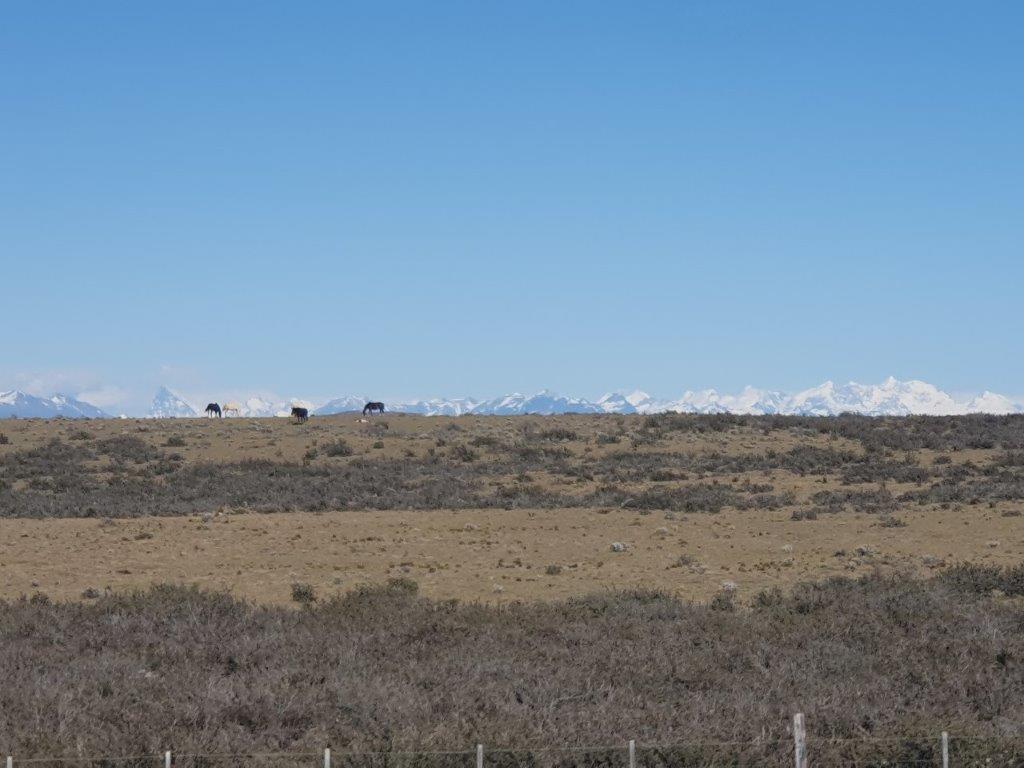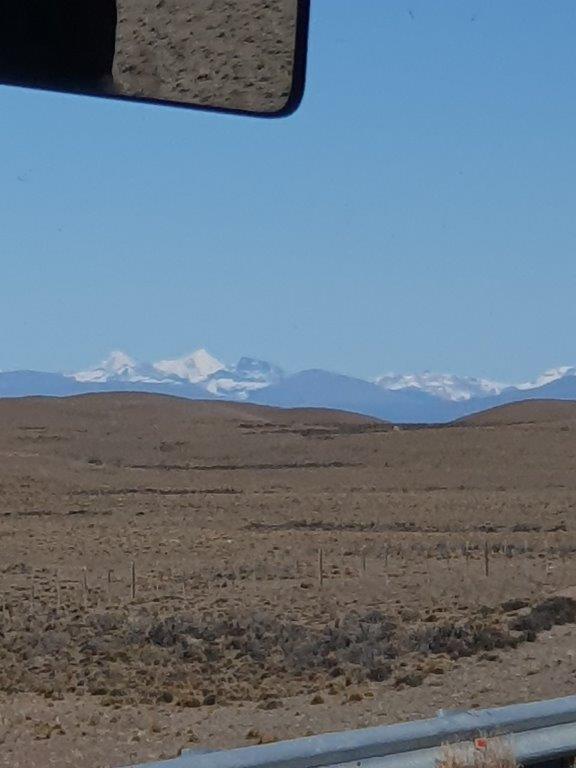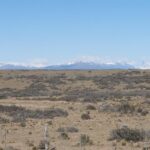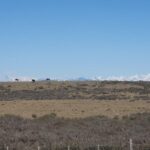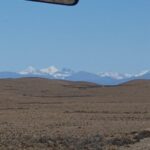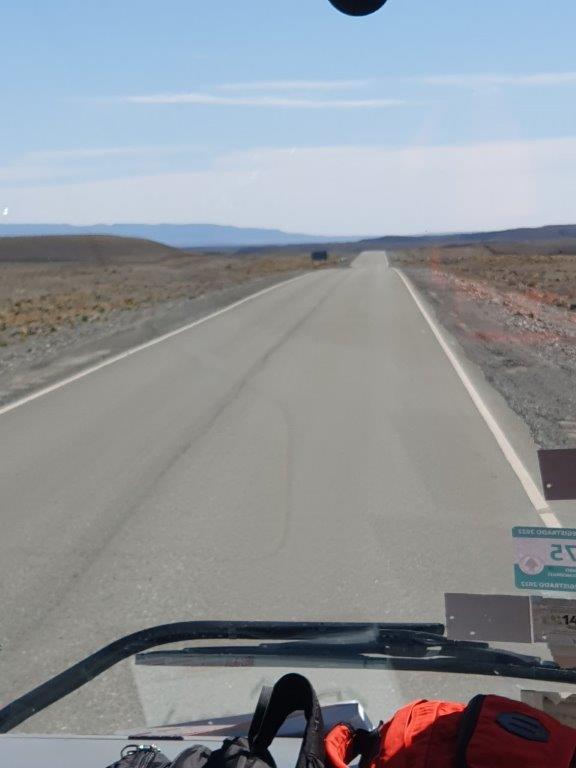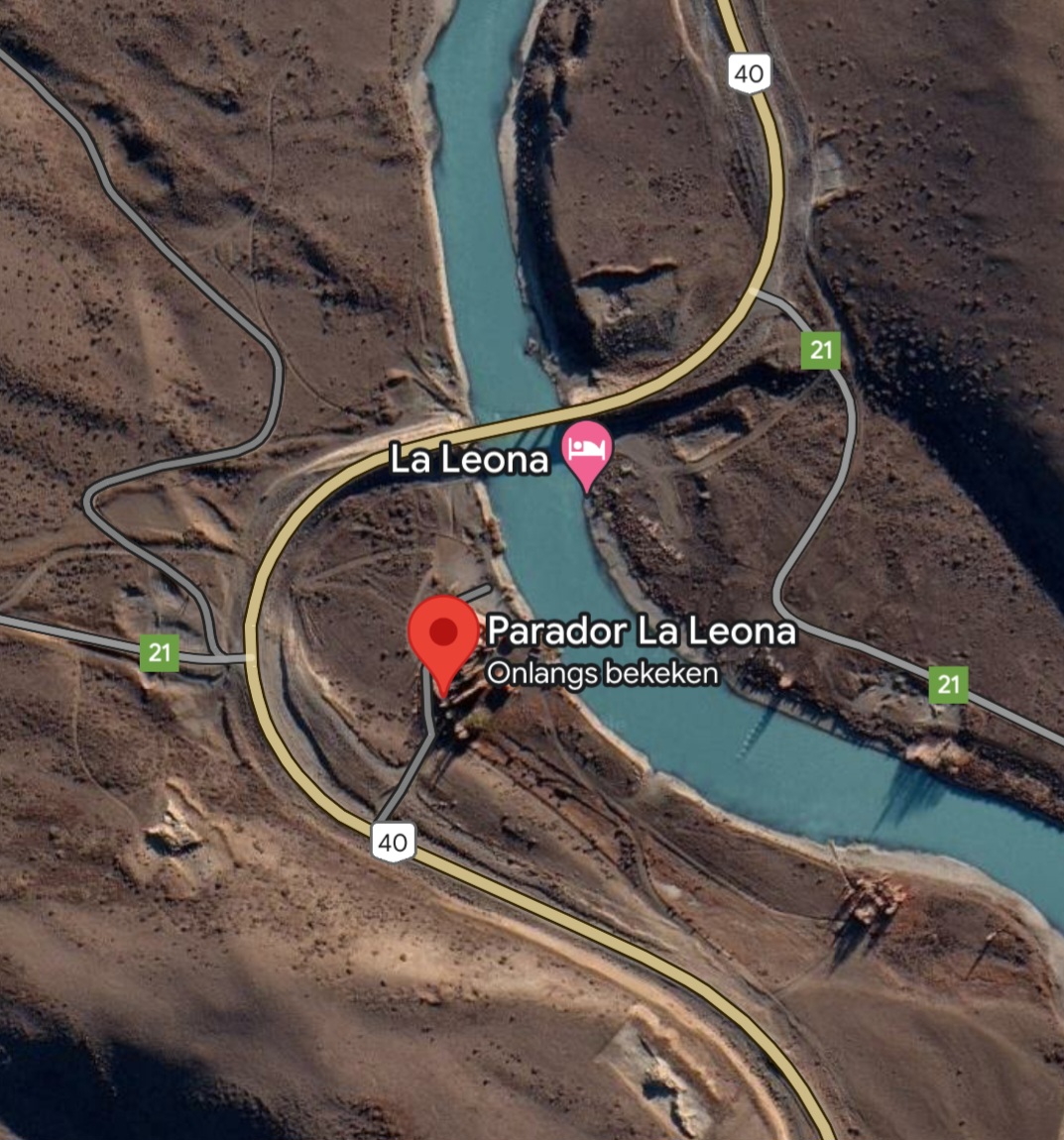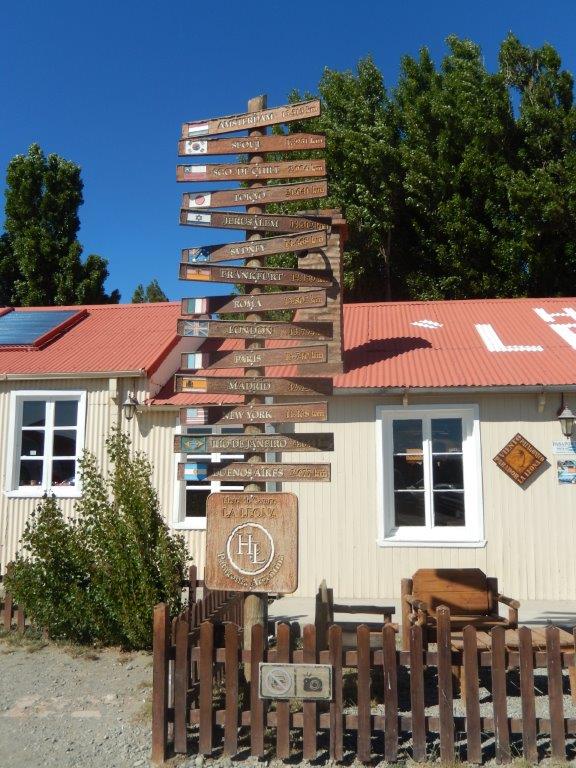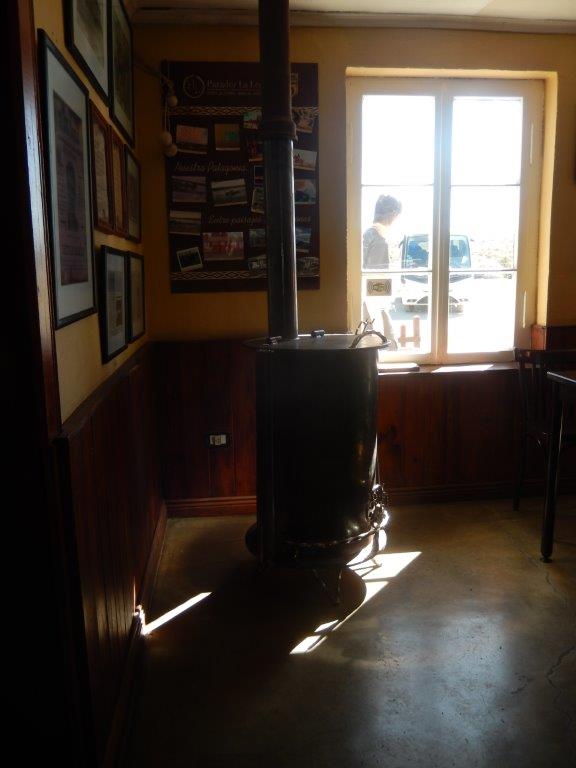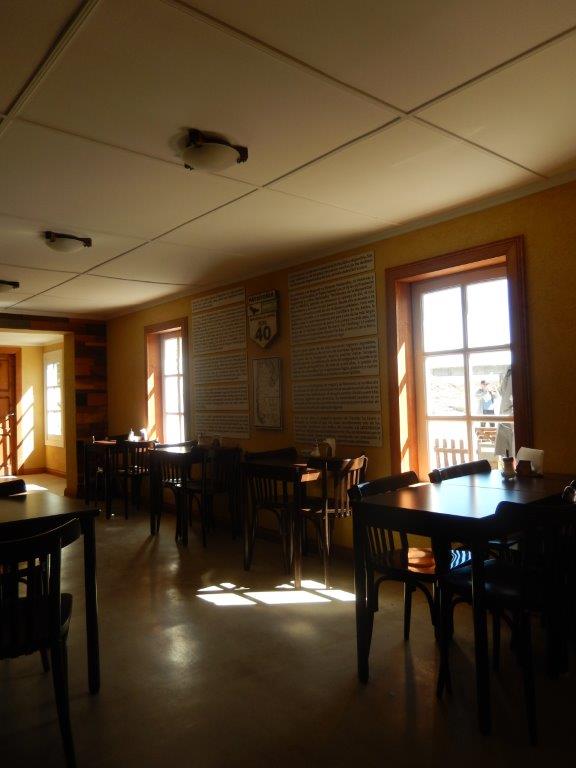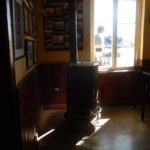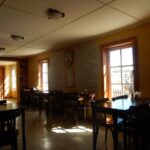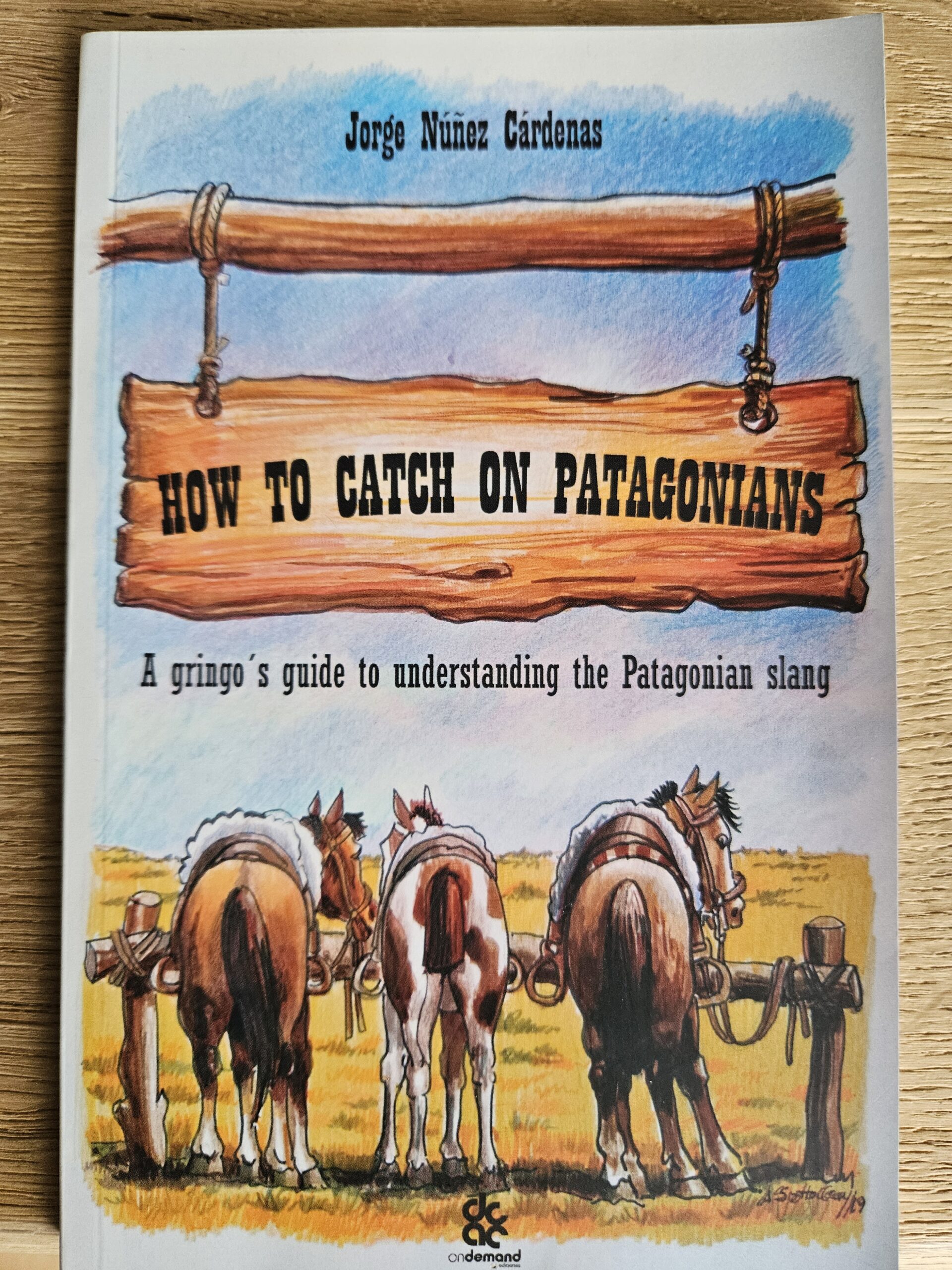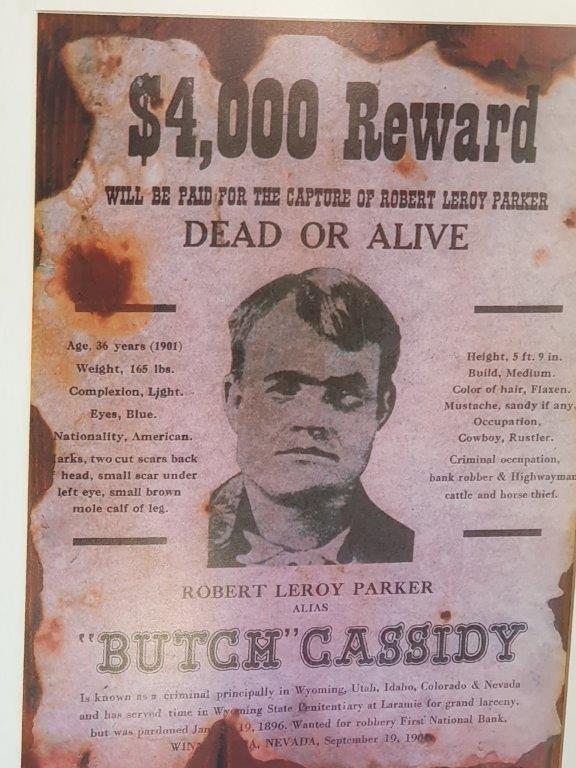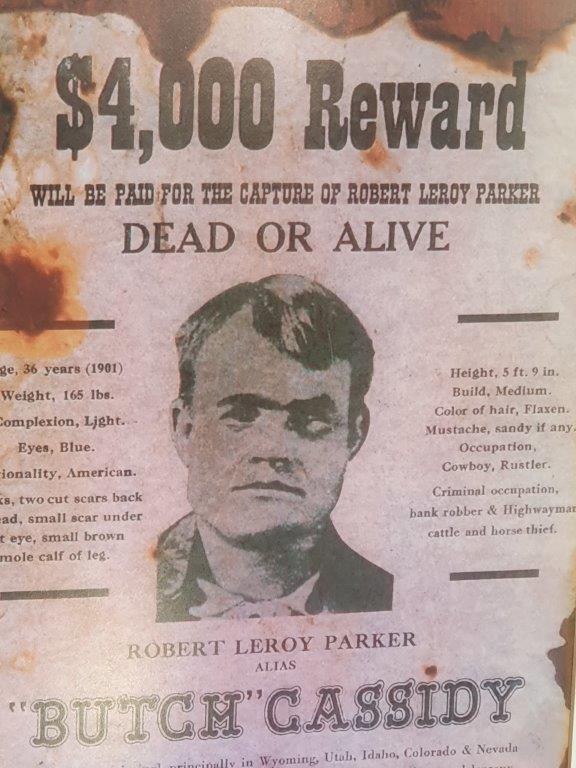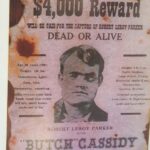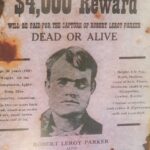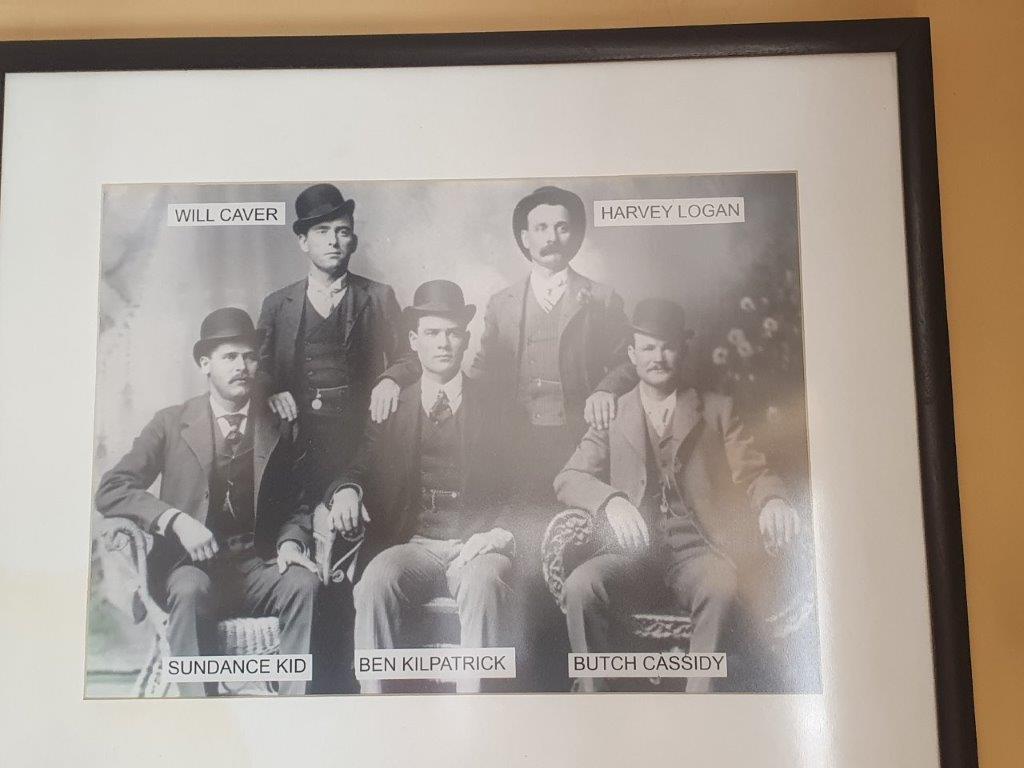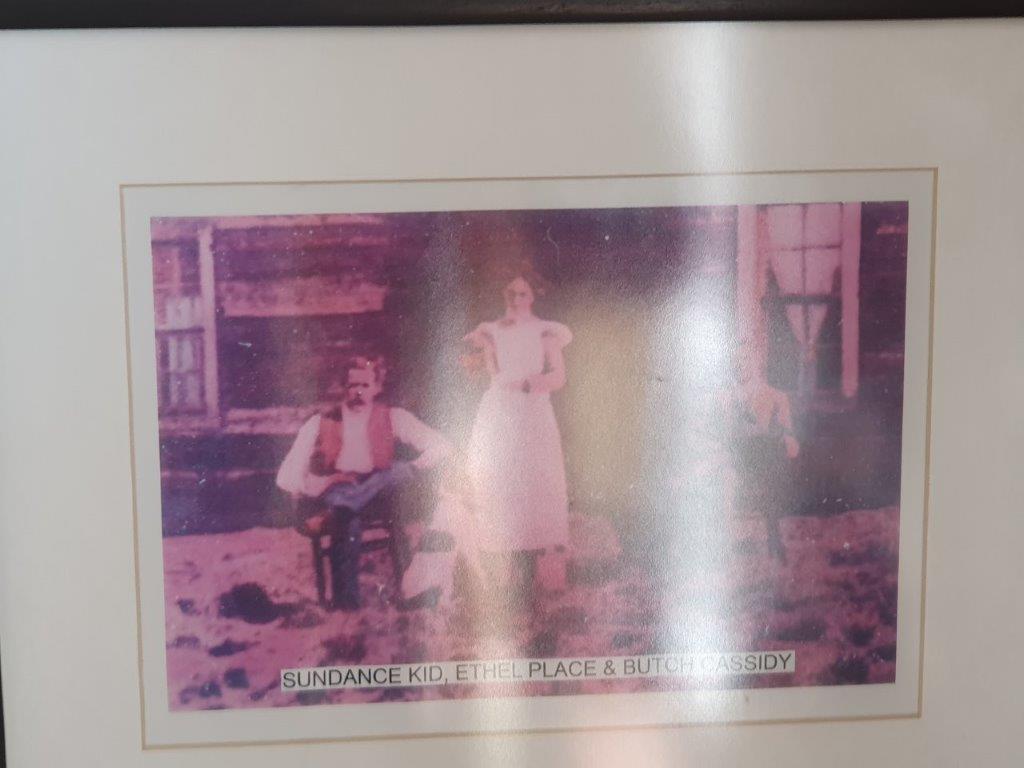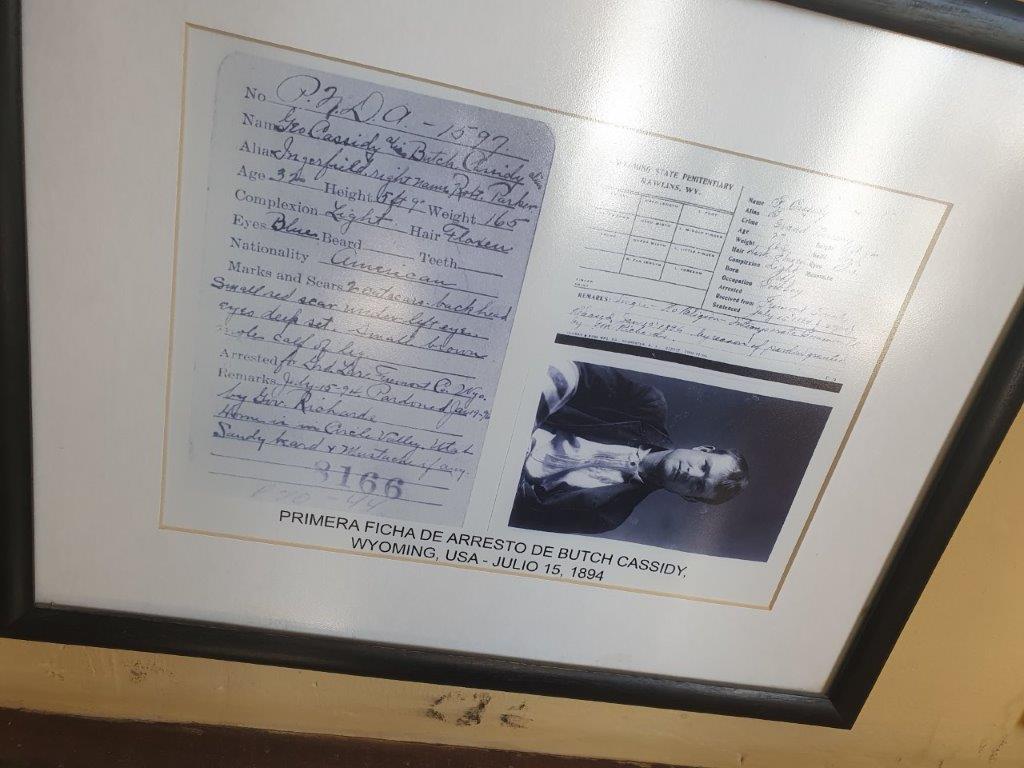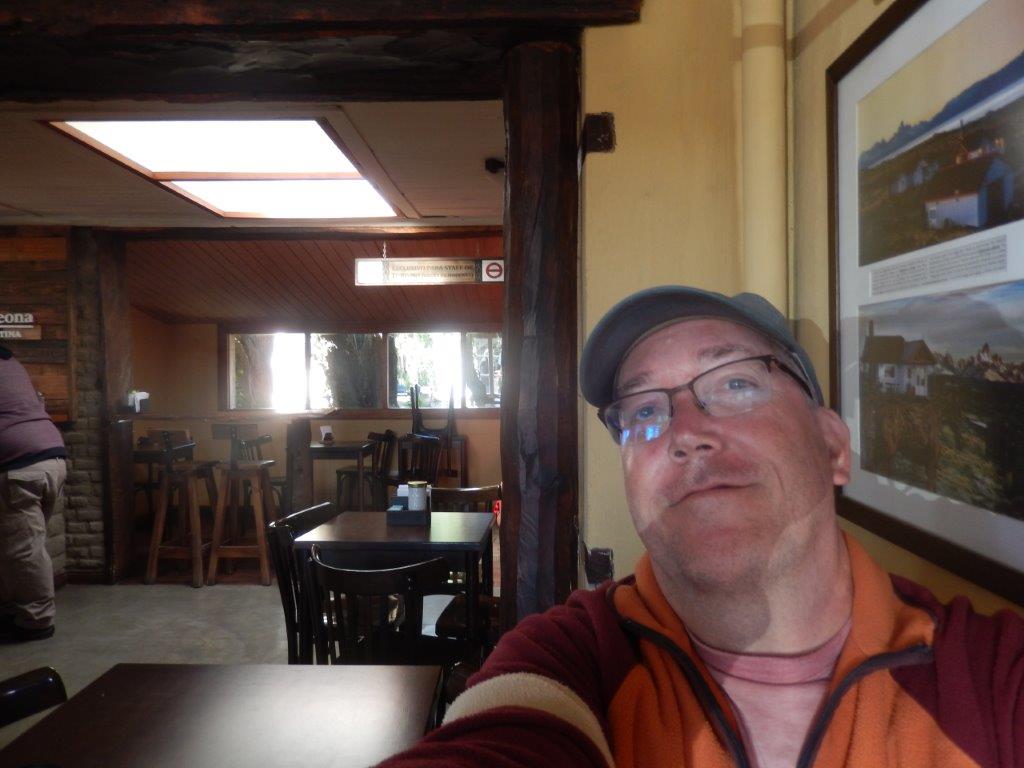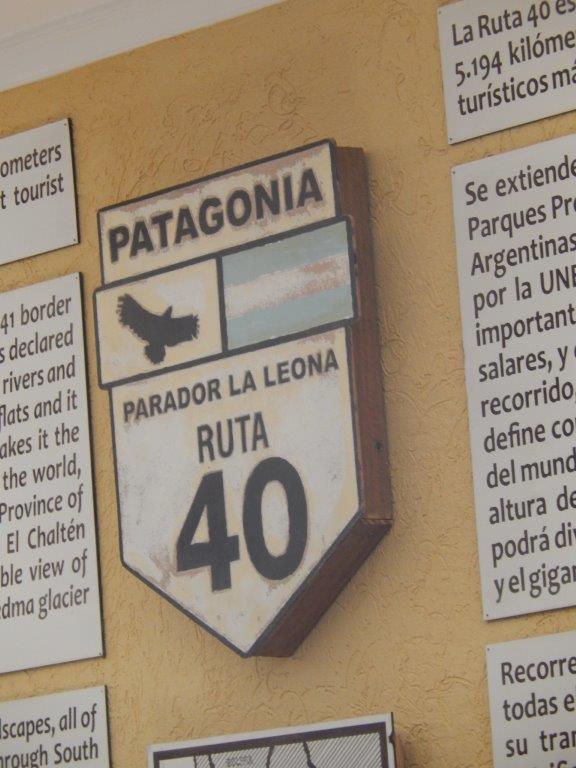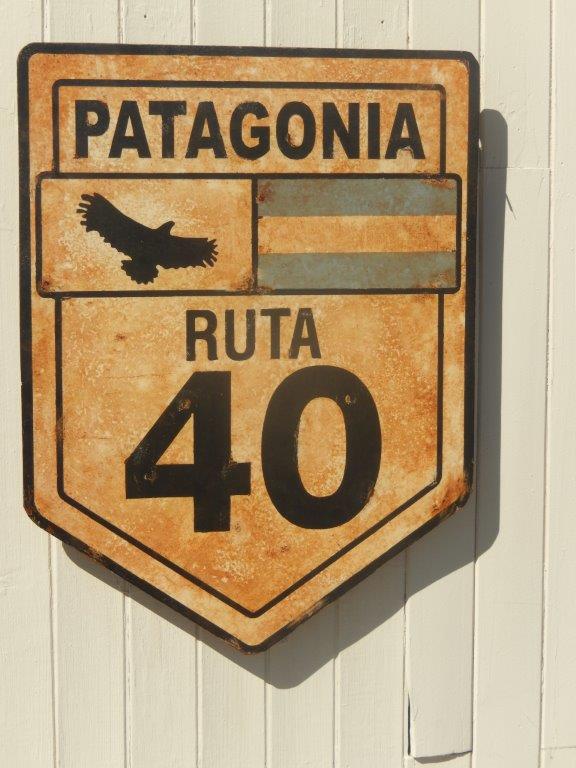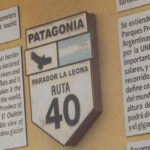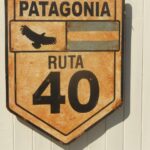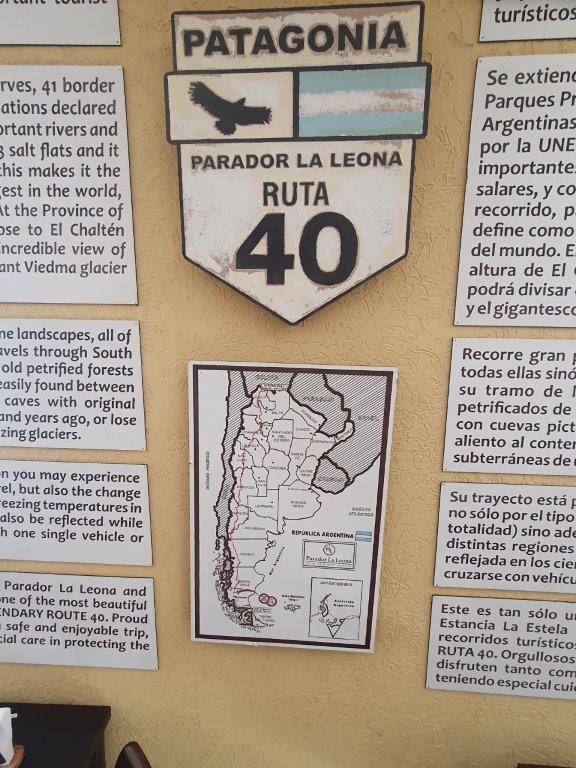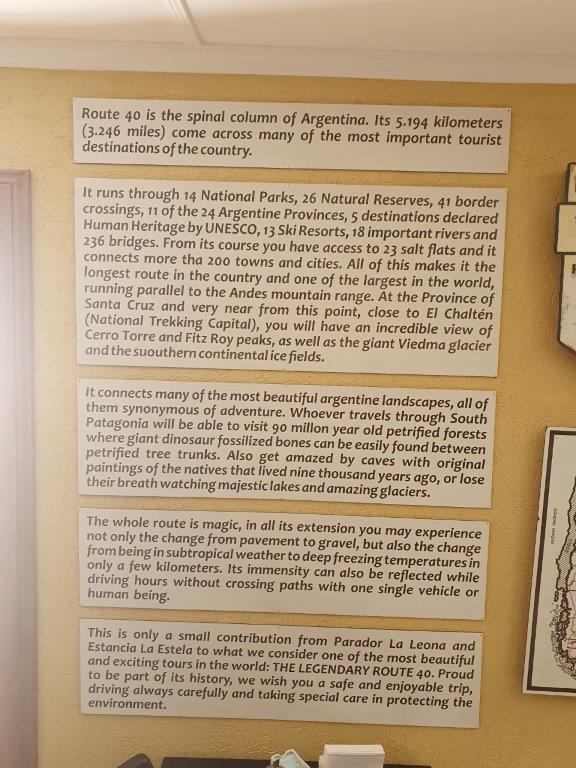21 Argentina: Roadtrip into the southern Patagonian desert towards Butch Cassidy’s lair
After the night flight from San Carlos de Bariloche via Buenos Aires, The Wandelgek arrived early in the morning at El Calafate Airport, next to Lago Argentino, …
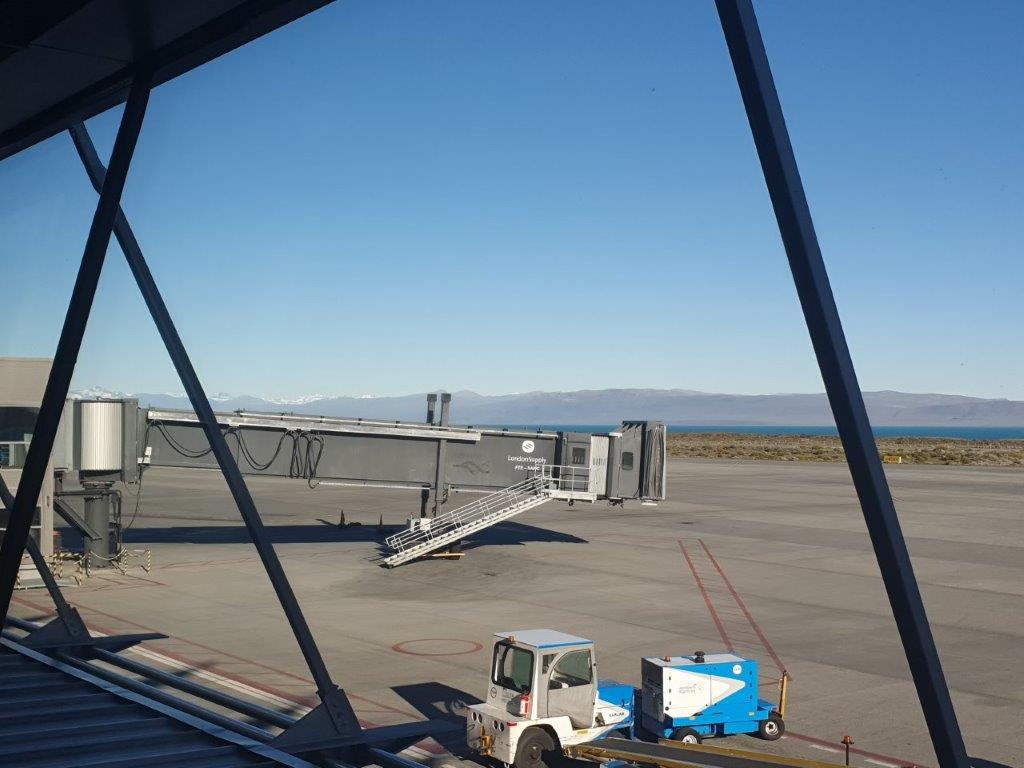
… from where he drove east along the shore of the large lake, until he reached the RN 40 or Ruta 40. Then he turned north.
Ruta 40 (Part 1)
National Route 40, also known as RN40 or “Ruta 40“, is a route in western Argentina, stretching from Cabo Vírgenes near Río Gallegos in Santa Cruz Province in the south to La Quiaca in Jujuy Province in the north with approximately 5194 km length. The route parallels the Andes mountains. The southern part of the route, by now largely paved, has become a well-known adventure tourism journey, and there are plans to pave the whole road.
RN40 is the longest route in South America and one of the longest in the world alongside such routes as U.S. Route 66, Canada’s Trans-Canada Highway, and Australia’s Stuart Highway, more than 5,000 kilometres (3,100 mi) long. At its traditional southern end near the city of Río Gallegos, it starts at sea level. It then crosses 20 national parks, 18 major rivers, and 27 passes in the Andes. Route 40’s highest point is 5,000 m (16,404 ft) in Abra del Acay in Salta Province.
The road crosses the provinces of Santa Cruz, Chubut, Río Negro, Neuquen, Mendoza, San Juan, La Rioja, Catamarca, Tucumán, Salta, and Jujuy.
The Ruta 40 to me, The Wandelgek, was impressive. It looked everything like the endless road it really was.
It skirted the shores of 2 major lakes (Lago Argentino and Lago Viedma) in the Southern Lake District which The Wandelgek had now entered. More about that in a later blogpost though.
Far away to the West were the ever present white snow covered peaks of the Andes, but they would not remain that far for very long… 😃
Hotel La Leona
A few kilometers before the junction of the Ruta 40 and the RP 23, …
… the Ruta 40 crosses a bridge over the Rio La Leona, just before the bridge, is Hotel La Leona.
At only 110 Km of El Calafate, on Nacional Route Nº 40, at the shore of the river La Leona and at only a measly amount of metres of the Lake Viedma, exactly half way between El Calafate and El Chalten, in a magnificent natural surrounding is La Leona Roadhouse & Country Lodge. Here you can witness over more than 110 years of the legendary history of Southern Argentinean Patagonia.
In 1894, due to the permanent growing of farming establishments in the area – and in the same place where 17 years before Francisco P. Moreno (the Perito Moreno, a renowned argentine scientist and explorer) was attacked and badly injured by a female puma (“LEONA” in the Patagonian slang, which cannot be found in this funny titled and illustrated booklet, which The Wandelgek decided to bring home as a souvenir:
), hence giving its name to the river – the National Government at that time ordered the construction of the first raft that allowed the settlers, their animals and merchandise to go and come back from the Atlantic coast, a trip that at that time took more than a month. At 200 meters down the river you can still see the anchorage where the raft shifted, which offered its services until 1974, when the actual bridge was finished.
La Leona Roadhouse
Simultaneously, and to lodge the settlers which, in their majority had to wait several days to be able to cross their herds of sheep (the raft could only load 200 animals), a family of Danish immigrants, the Jensen, started the construction of the Roadhouse and Country Lodge La Leona, that since its beginning has been witness of significant historic events that gave worldwide fame to this place.
Butch Cassidy’s Lair
I’ve written before, in previous blogposts about the bandit Butch Cassidy, leader of The Wild Bunch and his relationship with Argentine Patagonia:
9. Argentina: Roadtrip part 1 – Of gigantic Dinosaurs, Welsh Explorers and ruthless Outlaws
&
13. Argentina: A story of brutal bandits and a legend of fatal love
But when preparing these travels I kept bumping into him and into locations where I was anxious to go to.
In 1905, three unknown “gringos” stayed here for a period of time, and then continued on their voyage with an unidentified course.
After a while, when the local police arrived with several different pictures, the landowners of that time, likely recognized their distinguished visitors. It seems that those guest where no less than Butch Cassidy, Sundance Kid and his wife Ettel Place, who had left and were riding north to San Carlos de Bariloche, from where they crossed the Andes into Chile. The trail got lost from there…
… who after robbing the Londres and Tarapaca’s Bank in Rio Gallegos …
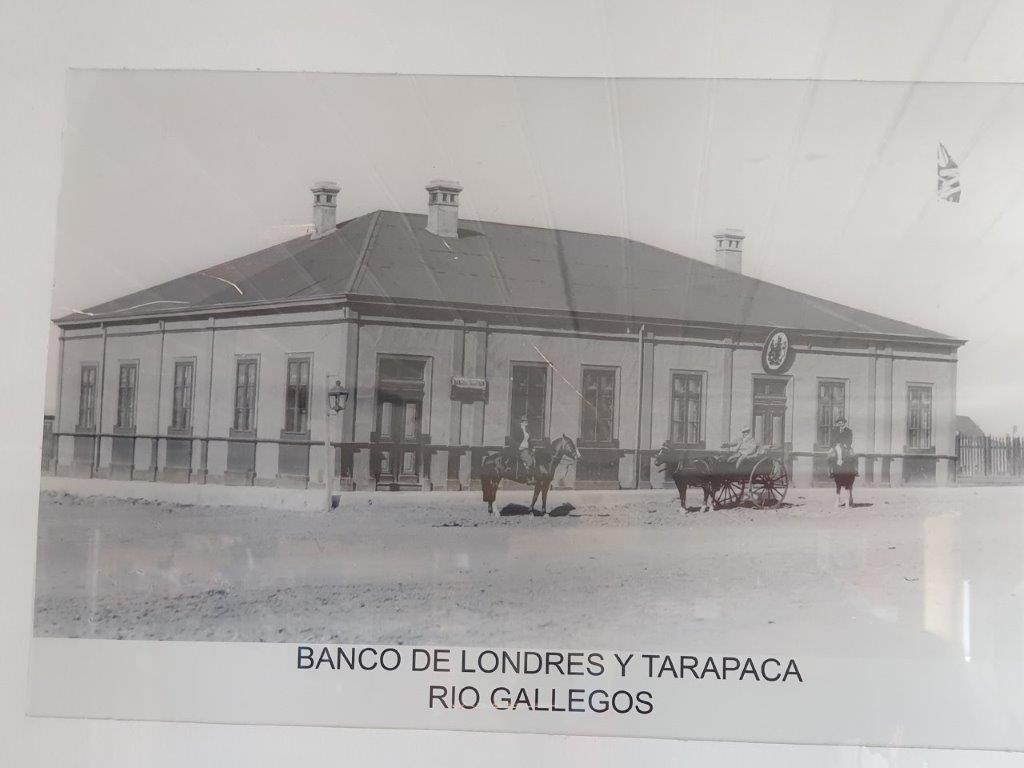
… escaped over the desolate unhospitable steppe and eventually decided to make a “parade tecnica”(an unplanned stop) in La Leona, lasting about a whole month, because this refuge must have seemed like a save end of the world shelter to them.
Some very impressive memorabilia remember us visitors of those days…
Most impressive was the arrest administration, showing Butch’s arrest and release.
It was at the same time that a famous bandit born in Uruguay and called Asensio Brunel, raided also this area. Horse-riding without a saddle, dressed with puma furs and eating only horse raw meat, his runnings acquired touches of legend. Some historians say that this hermit, a rare combination of Robin Hood and Billy the Kid, finished his misdeeds killed by several settlers in a shooting worthy of the best Far-West films. Others, that he was ambushed and murdered, by the Indian Chief Kenkel on Río Senguer (Province of Neuquen). The only truth is that the place and the way he died is still today a mystery.
The Hotel expands
The Petersen family together with the German citizen Alfred Brodersen acquired the establishment in 1910; amplified the “hotel” from 2 to 4 bedrooms, totally made with bricks of mud, and built a country-bar (saloon) and general store that today work as the bar and teahouse of the Roadhouse. Years later Jul and Feliza Christensen were the owners and after a certain period they sold the place to the Saldia/Westerlund family.
The first commercial permit dates from year 1916 and it was granted in Buenos Aires, since at that time the actual Province of Santa Cruz was National Territory and all legal and administrative procedures had to be done in the Capital City.
The long waitings to cross the river, the large crowds of country-laborers and the excess of alcohol produced great quantity of fights which, at that time, were settled by knife duels that usually ended with the life of one or more contenders.
During the year 1921 in Patagonia Austral there was a ranch laborer strike that ended in a bloody repression organized by the National Government of that time. La Leona was not foreign to the reality of these tragic events. It is well known that many fugitives hid here, and later escaped the persecution arranged and commanded by the Lieutenant Colonel Hector Varela, military commander of Santa Cruz Province. Some of them were lucky enough to escape, but others less fortunate fell to the hands of their persecutors, and were executed with no judgment.
Mountain Climbers at La Leona
Born in Italy, this Salesian priest combined his priestly vocation with his passion for mountain climbing, photography and adventure. In between masses, marriages, baptisms and missionary actions he found the necessary time to perform epic mountain climbings and expeditions to the most inaccessible points of the Cordillera Austral (South Mountain Range).
The most famous and well known world climbers have stayed in La Leona before embarking on their fearless and sometimes deadly climbing expeditions to the Cerro Torre, Fitz Roy, Saint- Exhupery peaks and the Continental Ice Cap. Among these climbers were the well known french expeditioners led by Lionel Terray, who together with Louis Depasse, Jacques Poincenot (who died during the expedition) and the argentine climber and militar Lieutenant Francisco Ibañez, on February 2nd. 1952 conquered for the first time in history the legendary Fitz Roy mountain peak.
Casimiro Ferrari, Italian by birth and Patagonian by adoption, a real mountain climbing hero, deserves a special mention. After reaching several of the most difficult peaks of the area, he was the first man to conquer the Cerro Torre, whose granite and iced walls are considered, still today, to be among the most dangerous and exhausting in the world, and as Lionnel Terray wrote: “It´s the most spectacular geologic convulsion that the terrestrial surface has thrown towards the sky”. In love with the magnificence of the scenery that surrounded him, he settled definitively until his death in 2001 a few miles away from here, in the ranch Punta del Lago.
Nowadays, and after a difficult and meticulous restoration work, Patricia and Laura Kargauer together with Pablo Quiroz and Rafael Quiroz Kargauer (also owners of the nearby Estancia La Estela) run this mythical refuge, witness of more than 110 years of the legendary and fascinating history of the Argentine South Patagonia.
Ruta 40 (Part 2)
On the walls of its cozy interior is some additional information regarding Ruta 40…
Toilet story: Ingenuity
Whoever has not read my blogpost on Toilet stories regarding toilets I visited around the world, here is a link:
This is definitely another candidate to add to the list. After opening the door into the common room of the toilet area at Hotel Leona, it was a bit disappointing to see it was quite middle of the road/normal, or so it seemed at 1st glance.
But as soon as I let go of the door handle I noticed a thing going down in my right eye corner. When I looked, I saw it was a bottle filled with water, attached to a rope, attached to a pulley, attached to that same door.
When someone opened the door, the bottle was pulled up and when letting go of the door handle, the weight of the water pulled the bottle down by gravity and thus closed the door again.
Brilliant! Simple, but brilliant. No electricity required and a cheaper less poluting instrument for automatically closing a door than the production of a metal door closer. Okay the bottle was plastic, but at least it was being reused like this.
Ruta Provincial 23
After his visit to Hotel La Leona, The Wandelgek crossed the Rio La Leona and a few kilometers further he arrived at the junction where the RP 23 towards El Chalten started. There he turned west for what would become one of the highlights of this journey.
Provincial Route 23 (Spanish: Ruta Provincial 23), also known as RP23, is a highway that originates in National Route 40 in southwest Santa Cruz Province in Argentina. It has a length of 124 km (77 mi) of which 87 km (54 mi) is paved and 37 km (23 mi) is unpaved. RP23 starts at RN40 to the southeast and ends at Del Desierto Lake (Lago del Desierto) in the northwest.
RP23 borders the north shore of Viedma Lake, this being the only access by land to the town of El Chaltén. To access Del Desierto Lake, the route enters Los Glaciares National Park bordering Río de las Vueltas.

